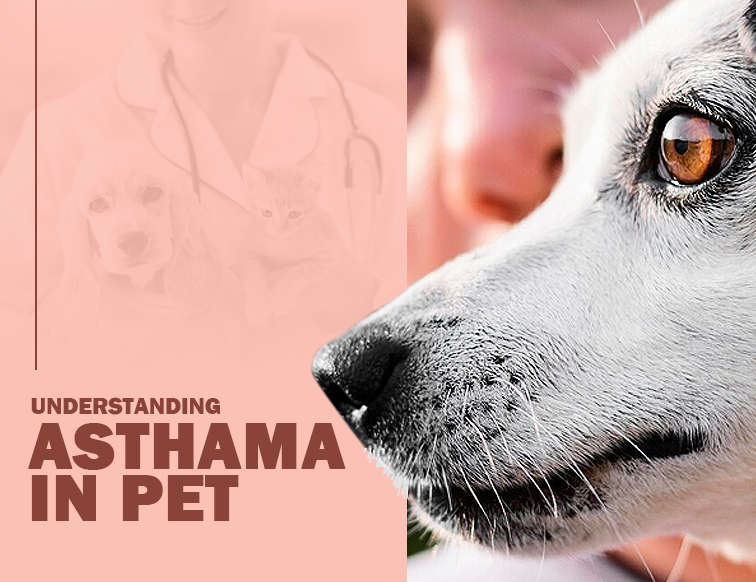Understanding Asthma In Pets

Picture this: your furry friend, the loveable companion who curls up on your lap or greets you with a wagging tail, starts showing signs of distress. Maybe they’re coughing or wheezing, or perhaps they seem unusually lethargic. As a pet parent, it’s heart-wrenching to see them struggle. One possibility you might not have considered? Asthma. Yes, just like humans, our pets can also suffer from this respiratory condition. Therefore, understanding the signs and symptoms of asthma in pets is crucial for early detection and effective management. In this guide, we’ll explore how asthma manifests in dogs and cats, the diagnostic process, and strategies for treatment and prevention.
Signs of Asthma in Pets
Asthma in dogs and cats can present with various signs and symptoms, including:
1. Coughing and Wheezing: Persistent coughing or wheezing, particularly after physical activity or exposure to irritants, may indicate asthma in pets.
2. Labored Breathing: Pets with asthma may exhibit labored breathing, characterized by rapid, shallow breaths or visible chest movements as they struggle to inhale and exhale.
3. Lethargy: Asthma can cause fatigue and lethargy in pets, leading to a reduction in their usual activity levels and energy.
4. Open-Mouth Breathing: Normally, dogs and cats breathe through their noses. However, pets with asthma may breathe through their mouths, especially during episodes of respiratory distress.
5. Reduced Appetite: Asthma can impact a pet’s appetite, resulting in decreased food intake and weight loss over time.
Diagnostic Process
If you suspect that your pet may have asthma, it’s essential to seek veterinary evaluation. The diagnostic process typically involves:
1. Physical Examination: Your veterinarian will conduct a thorough physical examination of your pet, paying close attention to their respiratory system and overall health.
2. Diagnostic Tests: Diagnostic tests such as chest X-rays, blood tests, and possibly bronchoscopy may be recommended to assess lung function and rule out other respiratory conditions.
3. Symptom History: Providing your veterinarian with a detailed history of your pet’s symptoms, including their frequency, duration, and any potential triggers, can aid in the diagnostic process.
Treatment and Management
Once a diagnosis of asthma is confirmed, your veterinarian will develop a treatment plan tailored to your pet’s individual needs. Treatment may include:
1. Medication: Bronchodilators, corticosteroids, and other medications may be prescribed to alleviate inflammation, open airways, and relieve respiratory symptoms.
2. Environmental Management: Minimizing exposure to airborne allergens, pollutants, and other triggers can help reduce the frequency and severity of asthma attacks in pets.
3. Regular Monitoring: Regular veterinary check-ups and monitoring of your pet’s respiratory health are essential for tracking progress, adjusting treatment as needed, and addressing any emerging concerns.
Prevention
While asthma cannot always be prevented, certain measures can help reduce the risk of respiratory issues in pets, including:
1. Maintaining a Clean Environment: Regularly cleaning and dusting your home, using air purifiers, and keeping pets away from smoke and other airborne pollutants can help minimize exposure to respiratory irritants.
2. Healthy Lifestyle: Providing a balanced diet, regular exercise, and maintaining a healthy weight can support your pet’s overall health and immune function, reducing the likelihood of respiratory issues.
Conclusion
Asthma is a manageable condition in dogs and cats, but early detection and appropriate treatment are essential for ensuring your pet’s well-being. By familiarizing yourself with the signs of asthma, seeking veterinary care promptly, and implementing preventive measures, you can help your furry companions live healthier, happier lives. Remember, your veterinarian is your trusted partner in safeguarding your pet’s respiratory health, so don’t hesitate to seek their guidance and support.
